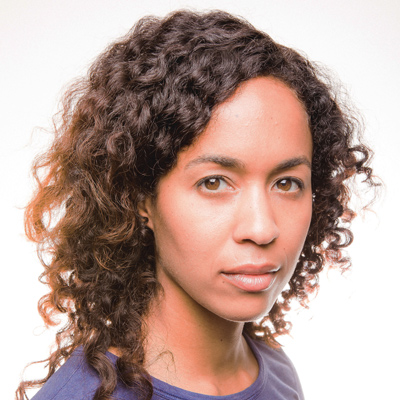In this exclusive interview with KCRep, Flood playwright Mashuq Mushtaq Deen talks about his inspiration for the play and how it came to be.
HALLIE GORDON: One of the many fascinating qualities I have found in your plays and in your writing is that you hold a wide lens on people and characters which allows us to interrogate them from our own personal vantage point. For some this play might hold meaning around the climate crisis, for others marriage, or the generational divide. Can you talk a little bit about how you started writing Flood? Where did those characters come from?
MASHUQ MUSHTAQ DEEN: This play began to take root right after the 2016 election. The question in the air at that time was why did so many white women vote with their husbands, even though it was to vote for a man who was so publicly misogynistic. I think for people on the left, it was a rhetorical question because they could not fathom any real answer. But for me, it became a genuine question: Why do women stay? An image took root in my writing-mind of an older couple, who had the texture of the sitcom reruns I grew up with and loved — The Donna Reed Show, Bewitched, All In The Family. They were so sure of themselves in the TV shows, but I wondered how bewildered they might be about the world as it is now. I am myself between generations, and I am often bewildered. It was a place where I could meet them, Darren and Edith, these characters who found me and that’s where we began our journey together.
HALLIE: As a writer you have spoken openly about how, as an Indian-American child of Muslim parents, you felt a certain expectation from your community to see yourself as oppressed by the white dominate culture, but because you’re a transgender man, you faced the most rejection from your own family and community. How has your personal experience influenced your work?
DEEN: It’s the lens through which I make my work. I exist in a liminal space: I exist somewhere “between” Indian and American, gay and straight, even man and woman, and this complicates everything about how I see the world. The people who love you are often who hurt you. There is no “other” to me, and so I reject that notion of “other” in my work. (This makes me irritating to be around at parties, but I’m a better writer for it!)
HALLIE: I think whether Edith is conscious of it or not at the top of the play, she knows Darren needs her, and that’s important to her. The way you’ve written those characters, it’s surprising how much you learn about their relationship during the course of the play, when it feels like they say so little in the moment.
DEEN: Embedded in the form of absurdism is that instead of going forward in a plot-driven narrative, we go down through layers of meaning that are stacked on top of each other. There is repetition, yes, but it’s used for the purpose of excavation … I feel a great deal of compassion for Darren and Edith. They were following the rules they were given, rules from a different time, and like a set of directions, it was supposed to get them somewhere. But before they arrived, the world changed and that destination no longer exists. There is such grief and loss in that. In writing this, I learned how much Edith and Darren love each other, how much they need each other — particularly how much Darren needed Edith — and how much fear we must confront in the face of change. In the film The Two Popes, Jonathan Pryce’s character says, “Truth may be vital, but without love, it is unbearable.”
HALLIE: Can you talk a bit about the tone or style of the play? Both you and Ken Prestininzi (the director) were very observant about it.
DEEN: If you’re referring to the humor, I’ve heard it called the “humor of recognition.” We are not laughing at them, but — perhaps a little nervously — at ourselves. This is not a naturalistic play where a method actor holds seven feelings at once and all close to the vest. The style of this play is … like when you zoom into a photograph and you see the separate pixels. Instead of seven feelings at once, we have each one in rapid succession. Maria Irene Fornes has a great quote that I will paraphrase here: ‘In a naturalistic play, you are right up close to the character and you can feel them breathe. But here, you are feeling the play itself breathe.’ This is the world I want to live in when I’m writing, a space where we can feel the play itself breathe. I find more meaning here, stacked up upon itself, massive undercurrents that have always been there, and will someday topple us. And maybe we should be toppled, just a little.
HALLIE: What is your hope for audiences walking away from this experience?
DEEN: My hopes are not that important here. As the 14th-century poet Hafiz would say, “I am but a hole on a flute; the important thing is the music.”
